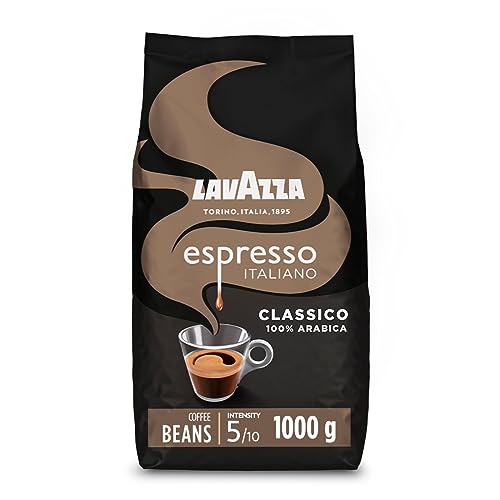What's The Current Job Market For Coffee Beans Types Professionals?

Coffee Bean Types: Arabica, Robusta, Liberica, and Excelsa
If you're a coffee lover, you likely already know that different beans can produce different flavors. Find out more about four of the most well-known varieties: Arabica, Robusta, Liberica and Excelsa.
Excelsa beans are a kind of Liberica that is only grown in Southeast Asia. They have a sweeter and more tart flavor profile and are often used in blends of coffee to add depth.

Arabica
Arabica is the most well-known coffee in the world accounting for 75% of the world's coffee bean production. Arabica beans have a sweeter and less sour taste than Robusta, and come with a variety of flavor profiles. The aroma and taste of coffee is affected by the conditions in the conditions it is grown and the methods of processing used.
The word "coffee" is derived from the Arabic word that means the berry. Coffee beans are actually seeds which grow inside bright red berries. It is believed that ancient Ethiopian shepherds found that their goats were stimulated by eating these fruit berries. The cultivation of coffee grew quickly around the world.
Coffee beans can grow at high altitudes and thrive in cold temperatures and plenty of rain. This is why Arabica coffee is thought to be the most delicious type of coffee.
Many specialty coffee shops and roasters focus on ethical sourcing of arabica beans, and focusing on fair wages for farmers and sustainable farming practices. These companies often blend arabica beans to create unique signature coffees that work well with many brewing methods. Blending is a way to control the flavour, aroma as well as body and acidity of the coffee. It is often preferred in order to achieve an even and consistent flavor that appeals to a wider market.
Robusta
Robusta beans (Coffea canephora) are the second most common type of coffee bean grown in the world. They contain more caffeine per bean than Arabica, and are more resistant to disease and pests. They also contain higher levels of chlorogenic acid, which are antioxidants that naturally occur. These acids can cause oxidation in the coffee brewing and produce undesirable flavors.
The plant itself is more resilient than arabica, able to grow in less favorable climate conditions and at lower elevations. It can tolerate higher temperatures and thrives in direct sunlight. It grows faster and produces more coffee per plant than arabica, which makes it a more cost-effective crop to grow.
While coffee beans shop may seem counterintuitive, Robusta and arabica beans are often blended to make coffee blends. If you notice names like Uganda or Kenya on the coffee bags it's possible there is also some robusta.
Although some roasters exclusively use arabica beans but the majority do blend the two varieties to reduce costs and ensure quality. To ensure the integrity of the flavor it is recommended to select the highest quality beans from a trusted source. This can be accomplished by purchasing your beans directly from farmers.
Liberica
Liberica beans have a shape that is similar to a football which is why they are different from other types of coffee beans. They have a distinctive scent that is fruity and floral with smoky undertones. They are often added to other bean varieties to create a more intense, fuller flavor.
Liberica coffee beans are grown in West Africa and Malaysia (Borneo) as and in Southeast Asia. They are tolerant of hot, humid climates and can thrive at low altitudes. They also have a better resistance to disease than Arabica and Robusta.
These qualities make them ideal for growing at home. You can purchase the seeds from various sources. However, it's ideal to purchase the beans from local producers in order to ensure high-quality. The ideal conditions for the cultivation of Liberica coffee include fertile, deep volcano soils with a pH that is moderately acidic and adequate annual rainfall.
Another type of coffee bean is Excelsa that was once considered a distinct species, but was later re-classified to be a subspecies of Liberica. These coffee beans are oval-shaped and grow on large coffee plants that can reach 20 to 30 feet in height at medium altitudes. They have a distinct taste that is both fruity and tart that has made them a sought-after choice in house blends. They are also lighter on flavor and caffeine than Arabica and Robusta, but still possess a unique quality of flavor.
Excelsa
Excelsa coffee beans aren't as well-known as Arabica and Robusta, although they're fourth popular. They were considered to be a different coffee plant species until 2006, when they were classified as a synonym for Coffea Liberica var. dewevrei. Today, they're grown mainly in Southeast Asia and account for 7% of the world's coffee production. These beans are distinctive with a teardrop shape and carry a dark, mysterious taste. They are typically used to give blends additional body and a rich tart taste of ripened fruits.
Arabica beans are the most sought-after, and are known for having a sweeter taste. They thrive best at high altitudes and are able to thrive in warm, tropical climates. They also have a bit of acidity. If they are brewed correctly and roast properly they may have notes like nuts, chocolate or even fruit.
Robusta is a close second to Arabica and accounts for around 40% of the world's coffee. These beans are smaller and more round but they have twice as much caffeine as Arabica. They are also bitterer than the other two varieties and have an earthy, woody taste.
Now that you've learned the four most widely used varieties of coffee beans, it's time to choose the perfect cup. If you're looking to enjoy a smooth, delicate flavor, opt for an arabica bean or a blend of arabica and robusta beans.
